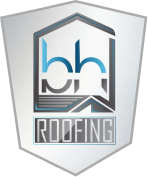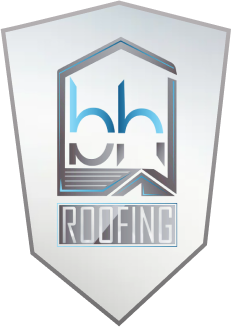Your roof is your home’s first line of defense against the elements, and one of its most formidable foes is the sun. In San Antonio, where the Texas sun can be relentless, understanding how UV rays affect your roof is crucial for maintaining its durability and lifespan. Sun damage to your roof can occur gradually, often going unnoticed until significant issues show up. Recognizing the signs of roof sun damage early can save you from needing to make expensive repairs and extend the life of your roofing system.
You may find that deterioration shows up in various ways, from subtle changes in appearance to more severe structural issues. As a homeowner, being able to identify these signs is essential for proactive roof maintenance. Common signs of sun damage include shingle discoloration, brittle roofing materials, and curling or cracking shingles. By familiarizing yourself with these signs, you can take action to address problems before they escalate.
In this guide, we’ll explore how the sun can impact your roof and provide you with the knowledge to spot potential issues. Armed with this information, you’ll be better prepared to take action and make the right decisions for your home’s maintenance and repair efforts.
Discoloration: A Tell-Tale Sign Of UV Roof Deterioration
One of the most noticeable signs that sun damage occurred to your roof is discoloration. As roofing materials are exposed to intense UV rays, they often undergo noticeable color changes. These changes vary depending on the type of roofing material used. For instance, asphalt shingles may fade from their original dark hues to lighter shades of gray or brown. Metal roofs might lose their luster and develop a chalky appearance. Even tile roofs can experience color fading over time.
It’s important to know how to tell the difference between normal aging and sun-induced discoloration. Natural weathering typically results in uniform color changes across the entire roof. However, UV damage often shows up as uneven discoloration, with some areas appearing more faded than others. South-facing sections of the roof, which receive more direct sunlight, are particularly prone to this type of damage.
If you notice patchy or inconsistent coloration on your roof, it may be time to consult a professional roofing contractor in San Antonio. They can assess the extent of the UV deterioration and recommend the appropriate measures to protect your roof from further damage. Remember, addressing discoloration early can prevent more serious issues and help maintain your roof’s structural integrity and appearance.
Brittle And Fragile Roofing Materials: When The Sun Takes Its Toll
The relentless San Antonio sun doesn’t just change the color of your roof; it can also significantly impact the structural integrity of your roofing materials. Over time, prolonged exposure to UV rays can cause roofing components to become brittle and fragile. The sun’s heat and radiation break down the chemical bonds in roofing materials, leading to a loss of flexibility and resilience.
Identifying brittle shingles and other roofing materials is crucial for maintaining your roof’s health. Look for signs such as cracking, splitting, or granule loss on asphalt shingles. These are clear signs that the sun has compromised the material’s integrity. For other types of roofing materials, such as wood shakes or clay tiles, watch for warping, cracking, or chipping. These symptoms suggest that the materials have become too brittle to withstand normal weather conditions effectively.
Curling, Cracking, and Warping: Visual Indicators of Heat Damage
As your roof endures the intense San Antonio sun, it may begin to show signs of heat-related stress through curling, cracking, and warping of roofing materials. These physical changes are not just cosmetic issues, they’re serious signs that the roof is severely damaged by the sun. Curling shingles is one of these signs, and it occurs when the edges of the shingles lift and curl upwards or downwards, creating gaps that can allow water to get underneath the roofing material and cause damage.
Cracking is another common result of UV roof deterioration. As roofing materials expand and contract with temperature fluctuations, they can develop cracks or splits. This is particularly noticeable on asphalt shingles, where you might see vertical or horizontal fractures across the surface. Warping, on the other hand, shows up as distortions in the overall shape of roofing materials, causing them to no longer lie flat against the roof deck.
These visual signals of heat damage can lead to more severe roofing problems if left unaddressed. They create vulnerabilities in your roof’s surface, potentially allowing water infiltration, which can lead to leaks, structural damage, and even mold growth. Regular inspections by a professional roofing contractor can help catch these issues early, ensuring your roof continues to provide reliable protection for your home.
Granule Loss: A Silent Threat to Shingle Integrity
Granule loss is a subtle yet significant sign of roof sun damage that often goes unnoticed by homeowners. These tiny, sand-like particles coating asphalt shingles play a crucial role in protecting your roof from UV rays and enhancing its fire resistance. As shingles are exposed to intense sunlight, the adhesive holding these granules in place can deteriorate, causing them to shed over time.
The amount of granules you lose will only increase the longer the shingles are exposed to UV rays, creating a cycle of increased vulnerability to sun damage. As more granules are lost, the underlying asphalt becomes directly exposed to the sun’s rays, leading to the shingle degrading quicker than ever. This can result in reduced weather resistance, decreased energy efficiency, and a shorter overall lifespan for your roof.
To assess granule loss, inspect your gutters and downspouts for granules. You may also notice bare spots or color variations on your shingles where granules have fallen off.
Hidden Dangers: Internal Roof Damage Caused by Sun Exposure
While external signs of roof sun damage are often visible, the hidden dangers lurking beneath the surface can be equally concerning. The intense San Antonio heat doesn’t just affect the outer layers of your roof, it also causes significant internal damage. Understanding these hidden threats is crucial for maintaining the overall health and longevity of your roofing system.
One of the primary concerns is heat building up in the attic heat. As your roof absorbs sunlight, it transfers heat to the attic space below. This can lead to extremely high temperatures, sometimes reaching up to 150°F or more if it’s unventilated. This extreme heat weakens roofing structures, causing wood to warp or crack, and the insulation to become damaged. The buildup may also force your cooling system to work harder, increasing energy costs.
Signs of internal sun damage to look for in your attic include:
– Warped or cracked roof decking
– Discolored or sagging insulation
– Rusted nail heads protruding through the roof deck
– A strong, musty odor indicating potential mold growth
– Visible light coming through the roof boards
Protecting Your San Antonio Home: Roof Heat Damage Prevention Strategies
In the intense San Antonio climate, protecting your roof from heat damage is crucial for maintaining your home’s integrity. Utilizing effective prevention strategies can significantly extend your roof’s lifespan and save you from expensive repairs. One key aspect is choosing roofing materials that are well suited for hot climates. Cool roofing options, such as reflective shingles or metal roofs, can effectively reflect sunlight and reduce heat absorption.
Regular maintenance is equally important in preventing heat damage. This includes keeping your roof clean from debris, ensuring proper attic ventilation, and quickly addressing any signs of wear. Professional services, such as annual inspections and treatments, can also play a vital role in maintaining your roof’s health. These experts can apply protective coatings that enhance UV resistance and perform necessary repairs before minor issues escalate.
By combining the right materials with diligent maintenance and professional care, you can significantly reduce the risk of UV roof deterioration and other heat-related damage. This proactive approach not only protects your home, it also contributes to better energy efficiency, potentially lowering your cooling costs during San Antonio’s hot summers.
BH Roofing Offer Quality Roofing Services For Sun Damage
If you’ve noticed any signs of roof sun damage such as shingle discoloration, brittle materials, or curling and cracking of shingles, it’s crucial to take immediate action to protect your home. At BH Roofing, we specialize in identifying and repairing sun-damaged roofs, ensuring your home remains safe and secure. Don’t wait for the damage to worsen. Protecting your roof from further sun exposure is essential for maintaining its integrity and longevity.
Call BH Roofing today at (210) 267-9029 to schedule a consultation and learn more about our roof heat damage prevention services. Our expert team is ready to help you enhance the durability of your roof against the harsh San Antonio sun.


